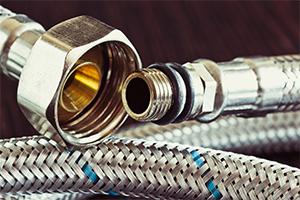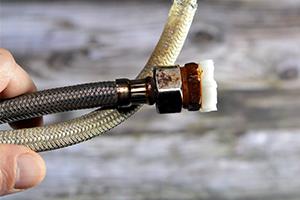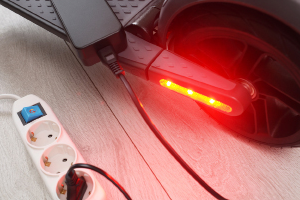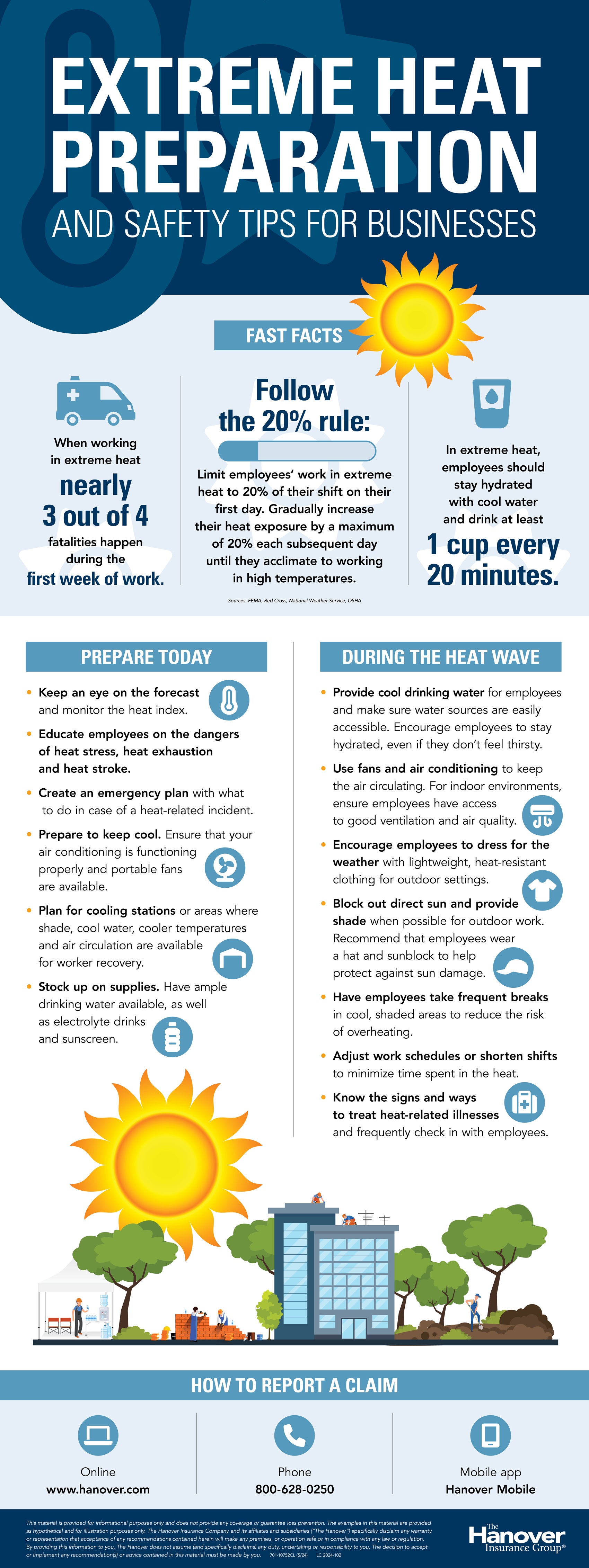How to spot hazardous trees on your property

Trees are beautiful. For homeowners, they can also be dangerous.
But they don't have to be. According to the American Society of Consulting Arborists, regular inspection and maintenance of trees can reduce the risk of tree-related property damage by up to 90%.
That's why there's a lot of value in regularly inspecting trees on your property. Here are signs to look for that indicate a tree may pose a danger to a home, and next steps if you spot potential problems.
How do I know if I have a hazardous tree?
- Dead or dying branches - Look for branches lacking foliage, displaying brittle and dry wood, or showing signs of decay. Ones that hang or lean towards your home are a major red flag, as they can break off during storms or high winds and cause significant damage.
- Hollow logs and trunks - This is a sign that a tree is structurally compromised and more susceptible to falling or collapsing. Hollow trees may appear solid from the outside but are weakened on the inside. If you notice cavities or hollow logs, consult a tree care vendor.
- Flaking or peeling bark - Bark serves as a protective layer for trees. So when it starts to flake, peel, or fall off, it could indicate an underlying issue, such as disease or insect infestation. Damaged bark weakens a tree's ability to withstand severe weather, making it more prone to breakage or falling.
- Exposed roots - These could indicate a tree that's unstable and may topple over during extreme weather conditions. Look for signs of soil movement or exposed roots around the base of the tree.
Trees and roof health
Taller trees near your home can create shade and moisture, fostering moss and mold growth on rooftops. To avoid this:
- Trim taller trees to reduce excessive shade on your roof
- Maintain proper roof ventilation to minimize moisture buildup
- Keep gutters clean to prevent water accumulation
What do I do if I have a hazardous tree?
In the case of dead branches, you may be able to trim these yourself. Make sure to take appropriate safety measures (including a helmet, safety goggles and gloves).
However, for more complex tasks, it is best to consult a tree care vendor. These professionals have the expertise to assess tree health, diagnose problems, and recommend appropriate actions. They can also provide guidance on tree removal or other necessary measures to ensure safety. We can help you find an arborist in your area if you don't already work with one.
Either way, any potential issues regarding trees on your property should be addressed immediately.
Sources:
International Society of Arboriculture
Tree Care Industry Association
Roofpedia
How to spot hazardous trees on your property
Trees are beautiful. For homeowners, they can also be dangerous.
But they don't have to be. According to the American Society of Consulting Arborists, regular inspection and maintenance of trees can reduce the risk of tree-related property damage by up to 90%.
That's why there's a lot of value in regularly inspecting trees on your property. Here are signs to look for that indicate a tree may pose a danger to a home, and next steps if you spot potential problems.
How do I know if I have a hazardous tree?
- Dead or dying branches - Look for branches lacking foliage, displaying brittle and dry wood, or showing signs of decay. Ones that hang or lean towards your home are a major red flag, as they can break off during storms or high winds and cause significant damage.
- Hollow logs and trunks - This is a sign that a tree is structurally compromised and more susceptible to falling or collapsing. Hollow trees may appear solid from the outside but are weakened on the inside. If you notice cavities or hollow logs, consult a tree care vendor.
- Flaking or peeling bark - Bark serves as a protective layer for trees. So when it starts to flake, peel, or fall off, it could indicate an underlying issue, such as disease or insect infestation. Damaged bark weakens a tree's ability to withstand severe weather, making it more prone to breakage or falling.
- Exposed roots - These could indicate a tree that's unstable and may topple over during extreme weather conditions. Look for signs of soil movement or exposed roots around the base of the tree.
Trees and roof health
Taller trees near your home can create shade and moisture, fostering moss and mold growth on rooftops. To avoid this:
- Trim taller trees to reduce excessive shade on your roof
- Maintain proper roof ventilation to minimize moisture buildup
- Keep gutters clean to prevent water accumulation
What do I do if I have a hazardous tree?
In the case of dead branches, you may be able to trim these yourself. Make sure to take appropriate safety measures (including a helmet, safety goggles and gloves).
However, for more complex tasks, it is best to consult a tree care vendor. These professionals have the expertise to assess tree health, diagnose problems, and recommend appropriate actions. They can also provide guidance on tree removal or other necessary measures to ensure safety. We can help you find an arborist in your area if you don't already work with one.
Either way, any potential issues regarding trees on your property should be addressed immediately.
Sources:
International Society of Arboriculture
Tree Care Industry Association
Roofpedia
How to spot hazardous trees on your property
Trees are beautiful. For homeowners, they can also be dangerous.
But they don't have to be. According to the American Society of Consulting Arborists, regular inspection and maintenance of trees can reduce the risk of tree-related property damage by up to 90%.
That's why there's a lot of value in regularly inspecting trees on your property. Here are signs to look for that indicate a tree may pose a danger to a home, and next steps if you spot potential problems.
How do I know if I have a hazardous tree?
- Dead or dying branches - Look for branches lacking foliage, displaying brittle and dry wood, or showing signs of decay. Ones that hang or lean towards your home are a major red flag, as they can break off during storms or high winds and cause significant damage.
- Hollow logs and trunks - This is a sign that a tree is structurally compromised and more susceptible to falling or collapsing. Hollow trees may appear solid from the outside but are weakened on the inside. If you notice cavities or hollow logs, consult a tree care vendor.
- Flaking or peeling bark - Bark serves as a protective layer for trees. So when it starts to flake, peel, or fall off, it could indicate an underlying issue, such as disease or insect infestation. Damaged bark weakens a tree's ability to withstand severe weather, making it more prone to breakage or falling.
- Exposed roots - These could indicate a tree that's unstable and may topple over during extreme weather conditions. Look for signs of soil movement or exposed roots around the base of the tree.
Trees and roof health
Taller trees near your home can create shade and moisture, fostering moss and mold growth on rooftops. To avoid this:
- Trim taller trees to reduce excessive shade on your roof
- Maintain proper roof ventilation to minimize moisture buildup
- Keep gutters clean to prevent water accumulation
What do I do if I have a hazardous tree?
In the case of dead branches, you may be able to trim these yourself. Make sure to take appropriate safety measures (including a helmet, safety goggles and gloves).
However, for more complex tasks, it is best to consult a tree care vendor. These professionals have the expertise to assess tree health, diagnose problems, and recommend appropriate actions. They can also provide guidance on tree removal or other necessary measures to ensure safety. We can help you find an arborist in your area if you don't already work with one.
Either way, any potential issues regarding trees on your property should be addressed immediately.
Sources:
International Society of Arboriculture
Tree Care Industry Association
Roofpedia
How to spot hazardous trees on your property
Trees are beautiful. For homeowners, they can also be dangerous.
But they don't have to be. According to the American Society of Consulting Arborists, regular inspection and maintenance of trees can reduce the risk of tree-related property damage by up to 90%.
That's why there's a lot of value in regularly inspecting trees on your property. Here are signs to look for that indicate a tree may pose a danger to a home, and next steps if you spot potential problems.
How do I know if I have a hazardous tree?
- Dead or dying branches - Look for branches lacking foliage, displaying brittle and dry wood, or showing signs of decay. Ones that hang or lean towards your home are a major red flag, as they can break off during storms or high winds and cause significant damage.
- Hollow logs and trunks - This is a sign that a tree is structurally compromised and more susceptible to falling or collapsing. Hollow trees may appear solid from the outside but are weakened on the inside. If you notice cavities or hollow logs, consult a tree care vendor.
- Flaking or peeling bark - Bark serves as a protective layer for trees. So when it starts to flake, peel, or fall off, it could indicate an underlying issue, such as disease or insect infestation. Damaged bark weakens a tree's ability to withstand severe weather, making it more prone to breakage or falling.
- Exposed roots - These could indicate a tree that's unstable and may topple over during extreme weather conditions. Look for signs of soil movement or exposed roots around the base of the tree.
Trees and roof health
Taller trees near your home can create shade and moisture, fostering moss and mold growth on rooftops. To avoid this:
- Trim taller trees to reduce excessive shade on your roof
- Maintain proper roof ventilation to minimize moisture buildup
- Keep gutters clean to prevent water accumulation
What do I do if I have a hazardous tree?
In the case of dead branches, you may be able to trim these yourself. Make sure to take appropriate safety measures (including a helmet, safety goggles and gloves).
However, for more complex tasks, it is best to consult a tree care vendor. These professionals have the expertise to assess tree health, diagnose problems, and recommend appropriate actions. They can also provide guidance on tree removal or other necessary measures to ensure safety. We can help you find an arborist in your area if you don't already work with one.
Either way, any potential issues regarding trees on your property should be addressed immediately.
Sources:
International Society of Arboriculture
Tree Care Industry Association
Roofpedia


















